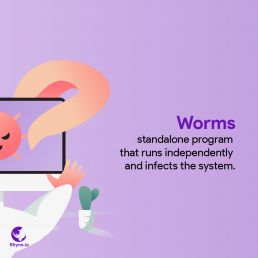Malware Attacks
Malware Attacks are caused by any software intentionally designed to cause damage to a computer, server, client, or computer network. Is a threat to your devices and your cybersecurity. It’s software that cyber attackers develop to gain access or cause damage to a computer or network, usually without the victim’s knowledge.
Malware attacks can occur on all sorts of devices and operating systems, including Microsoft Windows, macOS, Android, and iOS.
Although your computer may be infected through less complicated means — such as clicking on infected email attachments — it’s smart to know about the more elaborate types of attacks cyber criminals use to try to access your personal information.
Types of Malware Attacks
There are many different ways of categorizing malwares; the first is by how the malicious software spreads. You’ve probably heard the words virus, trojan, and worm used interchangeably, but as Symantec explains, they describe three subtly different ways malware can infect target computers:
- A worm is a standalone piece of malicious software that reproduces itself and spreads from computer to computer.
- A virus is a piece of computer code that inserts itself within the code of another standalone program, then forces that program to take malicious action and spread itself.
- A trojan is a program that cannot reproduce itself but masquerades as something the user wants and tricks them into activating it so it can do its damage and spread.
Why Rhyno?
Working as an extension of your team, Rhyno delivers advanced solutions for Managed Detection and Response and security assessment. By leveraging our understanding of the tactics attackers use to breach defenses, in-depth knowledge of the latest security tools, and a commitment to innovation, we ensure our clients are armed to continuously prevent, detect and respond to cyber threats.
We discover and safely exploit vulnerabilities before hackers do
The primary goal of a pen test is to identify weak spots in an organization’s security posture, as well as measure the compliance of its security policy, test the staff’s awareness of security issues and determine whether — and how — the organization would be subject to security disasters.
A penetration test can also highlight weaknesses in a company’s security policies. For instance, although a security policy focuses on preventing and detecting an attack on an enterprise’s systems, that policy may not include a process to expel a hacker.




